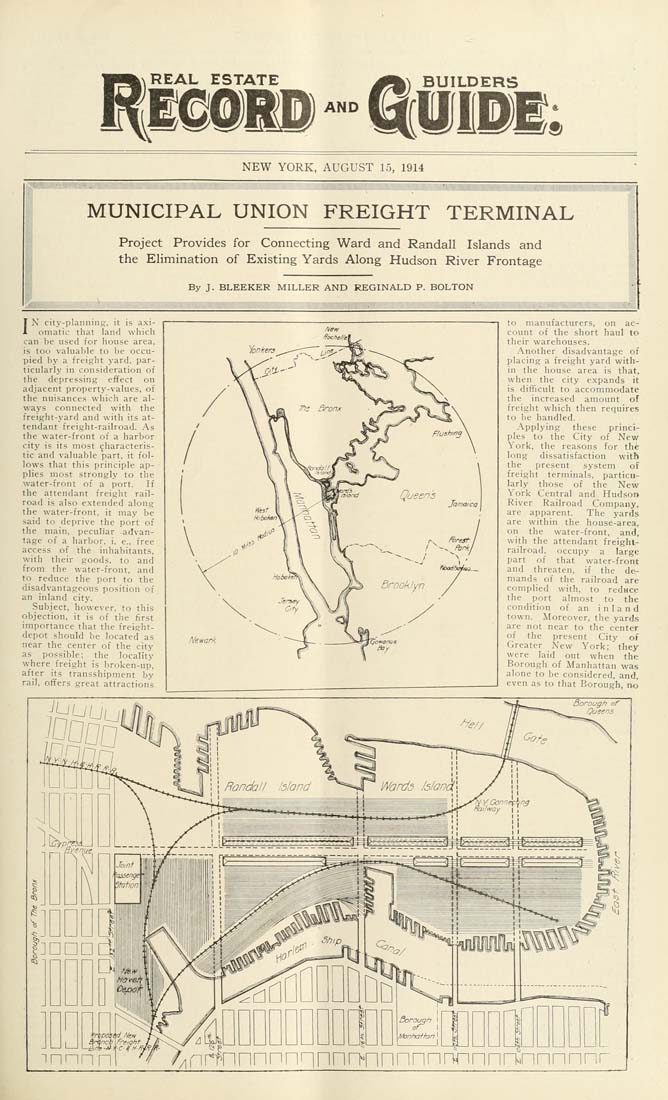Columbia University Libraries Digital Collections: The Real Estate Record
Use your browser's Print function to print these pages.
Real estate record and builders' guide: [v. 94, no. 2422: Articles]: August 15, 1914

Text version:
Please note: this text may be incomplete. For more information about this OCR, view About OCR text.
REAL ESTATE AND NEW YORK, AUGUST 15, 1914 illlBlllililllllllllllB MUNICIPAL UNION FREIGHT TERMINAL Project Provides for Connecting Ward and Randall Islands and the Elimination of Existing Yards Along Hudson River Frontage By J. BLEEKER MILLER AND REGINALD P. BOLTON IN city-planning, it is axi¬ omatic that land which can be used for house area, is too valuable to be occu¬ pied by a freight yard, par¬ ticularly in consideration of the depressing effect on adjacent property-values, of the nuisances which are al- v/ays connected with the freight-yard and with its at¬ tendant freight-railroad. As the water-front of a harbor city is its most characteris¬ tic and valuable part, it fol¬ lows that this principle ap¬ plies most strongly to the water-front of a port. If the attendant freight rail¬ road is also extended along the w^ater-front, it may be said to deprive the port of the main, peculiar advan¬ tage of a harbor, i. e.. free access of the inhabitants, with their goods, to and from the water-front, and to reduce the port to the disadvantageous position of an inland city. Subject, how^ever. to this objection, it is of the first importance that the freight- depot should be located as near the center of the city as possible: the locality where_ freight is broken-up, after its transshipment by rail, offers great attractions Newark to manufacturers, on ac¬ count of the short haul to their warehouses. Another disadvantage of placing a freight yard with¬ in the house area is that, when the city expands it is difficult to accoininodate the increased amount of freight which then requires to be handled. Applying these princi¬ ples to the City of New York, the reasons for the long dissatisfaction with the present system of freight terminals, particu¬ larly those of the New York Central and Hudson River Railroad Company, are apparent. The yards are within the house-area, on the water-front, and, with the attendant freight- railroad, occupy a large part of that water-front and threaten, if the de¬ mands of the railroad are complied with, to reduce the port almost to the condition of an inland town. Moreover, the yards are not near to the center of the present City of Greater New York; they were laid out when the Borough of Manhattan was alone to be considered, and, even as to that Borough, no Borough of Qaeerjs mnnn 'A nrf^nnnnnqrinn^nnnnnnnnnn^nnnnnr